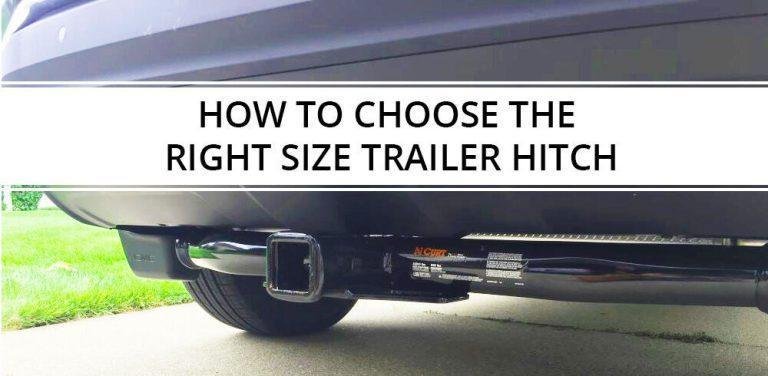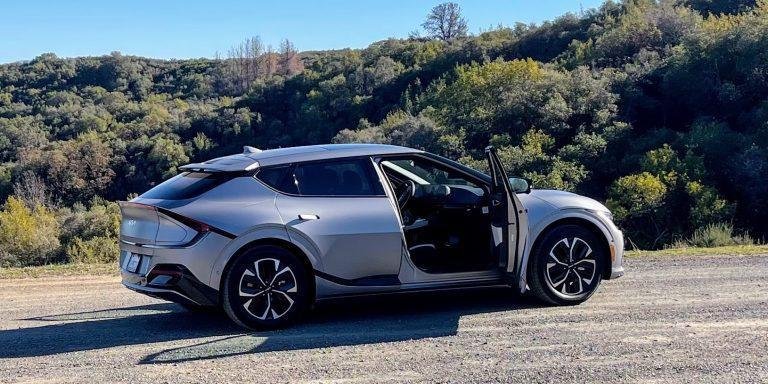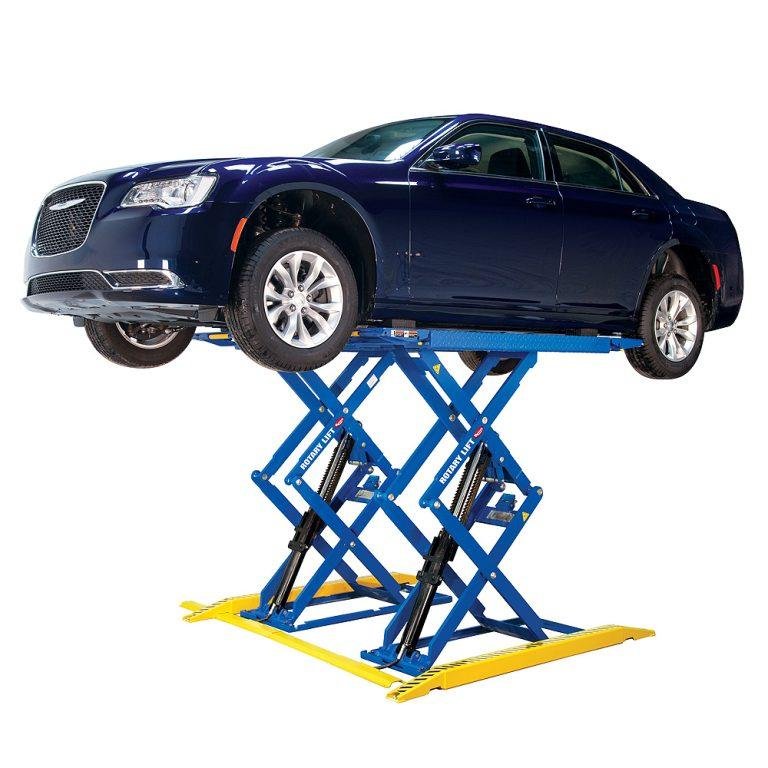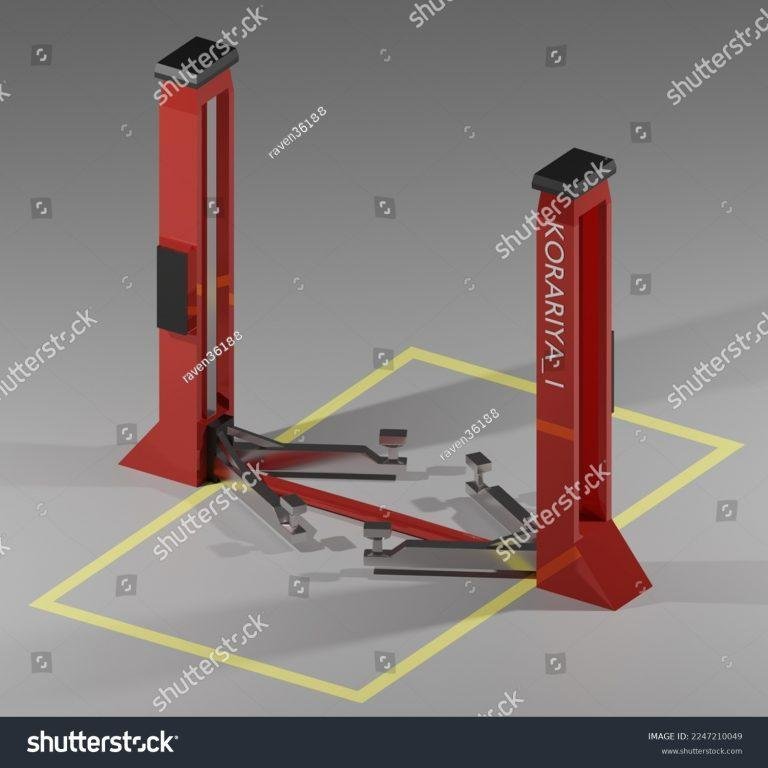Yes, you can install a hitch yourself. It is a straightforward process that can be done with basic tools.
If you have a vehicle with mounting points already in place, you can easily attach a hitch by following the manufacturer’s instructions. However, if your vehicle does not have pre-existing mounting points, professional installation may be necessary. Installing a hitch yourself can save money and give you the satisfaction of completing a diy project.
It is important to ensure that the hitch is securely installed and can handle the weight capacity required for your towing needs. Always consult the owner’s manual and manufacturer’s guidelines for specific instructions and safety precautions.

Credit: www.amazon.com
Importance Of Properly Installing A Hitch
Properly installing a hitch is crucial for safe towing. While you can install a hitch yourself, it’s important to follow the manufacturer’s instructions to ensure it’s done correctly. Hiring a professional is a smart choice if you’re unsure about the process or lack the necessary tools.
When it comes to installing a hitch, it is important to ensure that it is done correctly. Proper installation plays a crucial role in avoiding potential accidents and damage. Let’s explore the reasons why proper installation is of utmost importance:
Avoid Potential Accidents And Damage:
- Secure attachment: Properly installing a hitch ensures that it is securely attached to your vehicle, reducing the risk of it becoming loose or detached during towing.
- Stability and control: A properly installed hitch provides stability and control while towing, minimizing the chances of fishtailing or swaying, which can lead to accidents.
- Prevents damage: An incorrectly installed hitch can cause damage to your vehicle’s frame, bumper, or towing components. By installing it properly, you protect your vehicle from unnecessary wear and tear.
Ensure Proper Weight Distribution:
- Even weight distribution: A correctly installed hitch helps distribute the weight of your load evenly between your vehicle and the trailer. This prevents excessive strain on the towing components and maintains a balanced setup.
- Reduces strain on the suspension: Proper weight distribution allows your vehicle’s suspension to work optimally, reducing the risk of sagging or bottoming out. This improves overall handling and stability while towing.
Enhance Towing Safety:
- Improved braking: With a properly installed hitch, the weight of the trailer is more evenly distributed, enhancing your vehicle’s braking capabilities. This ensures responsive and controlled braking, reducing the risk of accidents.
- Better visibility: A correctly installed hitch ensures that the trailer is properly aligned with the vehicle, minimizing blind spots and improving visibility. This enhances safety when changing lanes or maneuvering in tight spaces.
- Reduced stress on the engine: Proper weight distribution achieved through proper hitch installation decreases the strain on your vehicle’s engine. This will help optimize performance and prevent overheating and engine damage.
Remember, when installing a hitch, it’s important to follow the manufacturer’s instructions and consult a professional if needed. By taking the time to install your hitch properly, you can enjoy safer and worry-free towing experiences.
Assessing Your Vehicle’S Suitability For Hitch Installation
Before installing a hitch on your vehicle, it is important to assess its suitability. While it is possible to install a hitch yourself, it is crucial to carefully evaluate your vehicle and its capabilities to ensure a successful installation.
Understanding Your Vehicle’S Towing Capacity
- The first step in assessing your vehicle’s suitability for hitch installation is to understand its towing capacity. This refers to the maximum weight your vehicle can safely tow.
- Towing capacity is determined by various factors, including the vehicle’s engine power, transmission, suspension, and braking system.
- To find your vehicle’s towing capacity, refer to your owner’s manual or contact the manufacturer. It’s important to obtain accurate information specific to your vehicle’s make and model.
Determining The Type Of Hitch Suitable For Your Vehicle
- Once you know your vehicle’s towing capacity, you can determine the type of hitch that is suitable for your needs. Here are the different types of hitches available:
- Receiver hitch: This type of hitch is commonly used and comes in various classes (such as class i, ii, iii, or iv) based on towing capacity. It mounts to the vehicle’s frame and allows for the attachment of various types of hitches and accessories.
- Gooseneck hitch: Ideal for larger trailers and fifth-wheel campers, a gooseneck hitch involves installing a ball hitch in the bed of the truck. This type of hitch provides increased stability and weight distribution.
- Fifth-wheel hitch: Similar to a gooseneck hitch, a fifth-wheel hitch is designed for heavy-duty towing. It mounts to the bed of a pickup truck and provides a more secure connection between the vehicle and the trailer.
- Consider the type of trailer you plan to tow and the weight it will exert on the hitch. Selecting the appropriate hitch type will ensure safe and efficient towing.
Considering Any Manufacturer Restrictions Or Warranties
- Before proceeding with hitch installation, it’s crucial to check if your vehicle has any manufacturer restrictions or limitations in place. These could affect warranty coverage or potentially impact the vehicle’s performance.
- Review your vehicle’s warranty documentation or contact the manufacturer directly to understand any specific guidelines or limitations related to hitch installation.
- In some cases, certain vehicles may require additional modifications or reinforcement to safely accommodate a hitch. Ignoring these restrictions could lead to damage or safety hazards.
- By complying with manufacturer restrictions, you can ensure that your warranty remains intact and that your vehicle is capable of handling the hitch and towing requirements safely.
Remember, it’s always recommended to consult with a professional or experienced installer when considering diy hitch installation. They can provide expert guidance, ensuring that the hitch is installed correctly and safely.
Gathering The Right Tools And Materials
Save time and money by installing a hitch yourself with the right tools and materials. Get the satisfaction of completing the task on your own while ensuring a secure and reliable hitch installation.
Essential Tools For The Installation Process
To ensure a successful hitch installation, it’s important to gather the necessary tools and materials upfront. Here are the essential items you’ll need:
- Socket wrench set: This versatile tool will help you tighten bolts and nuts securely.
- Torque wrench: Use this to accurately measure the tightness of fasteners and ensure proper installation.
- Drill with appropriate drill bits: Depending on your hitch and vehicle, you may need to drill holes for mounting brackets.
- Reciprocating saw or angle grinder: In some cases, you may need to trim or remove rear bumper fascia to accommodate the hitch.
- Tape measure or ruler: Use these tools to ensure precise measurements and proper alignment.
- Safety goggles and gloves: Protect your eyes and hands throughout the installation process.
- Jack stands and hydraulic jack: These will come in handy when you need to lift and support your vehicle securely during installation.
- Penetrating lubricant: In case you encounter rusty or stubborn bolts, this lubricant will make removal easier.
Remember to gather these tools before starting your installation to avoid interruptions and ensure a smooth process.
Necessary Hitch Components And Accessories
Before installing a hitch, it’s essential to have the right components and accessories on hand. Here’s a list of what you’ll need:
- Hitch receiver: The main component that attaches to your vehicle’s chassis and provides a mounting point for accessories.
- Mounting brackets: These brackets connect the hitch receiver to your vehicle, ensuring a secure and stable attachment.
- Bolts, nuts, and washers: Attach the mounting brackets to the vehicle’s frame using the appropriate hardware.
- Safety chains: These chains provide a secondary connection between your trailer and vehicle, providing added security.
- Hitch ball: If you plan on towing a trailer, you’ll need a hitch ball that matches your trailer’s coupler size.
- Hitch pin and clip: Secure the hitch ball mount to the receiver, preventing it from coming loose during towing.
- Wiring harness: If you’re towing a trailer with lights, a wiring harness will enable your vehicle to power those lights.
Make sure you have all the necessary components and accessories specific to your hitch and towing needs.
Optional Equipment For Added Convenience
While not essential for the installation process, the following optional equipment can enhance your towing experience:
- Hitch step: Provides easy access to the bed of your truck or roof rack, improving convenience when loading and unloading.
- Hitch cover: Protects the hitch receiver from dirt, debris, and corrosion when not in use.
- Hitch lock: Prevents theft of your hitch by securing it to the receiver with a lock and key.
- Hitch extension: If you need extra clearance between your vehicle and trailer, a hitch extension can help.
- Wiring adapter: Convert your vehicle’s wiring connector to match the type required by your trailer.
These optional accessories can add convenience and functionality to your towing setup, but they are not necessary for the installation itself.
Now that you know what tools, components, and accessories you need, you’re ready to move on to the next step of installing your hitch.
Preparing Your Vehicle For Hitch Installation
Preparing your vehicle for hitch installation? Wondering if you can do it yourself? Follow our easy steps to ensure a successful hitch installation without the need for professional help.
Securing A Suitable Workspace
Before you start installing a hitch on your vehicle, it’s important to secure a suitable workspace. Here are some key points to consider:
- Find a flat and level area: Look for a spacious and flat area, such as a garage or driveway, where you can comfortably work on your vehicle.
- Ensure sufficient clearance: Make sure there’s enough space around your vehicle to maneuver and access all sides easily.
- Avoid windy or rainy conditions: Working in adverse weather conditions can make the installation process more difficult and potentially hazardous.
- Use a workbench or sturdy surface: If possible, use a workbench or a sturdy surface to lay out your tools and parts. This will help keep everything organized and prevent damage to the hitch or other components.
Ensuring Adequate Lighting And Ventilation
Having adequate lighting and ventilation is essential for a hitch installation. Here’s what you need to consider:
- Sufficient lighting: Ensure that the workspace is well-lit so that you can clearly see the hitch and all the necessary components.
- Natural light or additional lighting: If natural light is unavailable or insufficient, consider using additional lighting sources like portable work lights or headlamps.
- Proper ventilation: Make sure there is good airflow in the workspace to avoid inhaling fumes from any adhesives or cleaning products you may need to use during the installation process.
Removing Any Obstacles Or Obstructions
Before you start the hitch installation, it’s important to remove any obstacles or obstructions. Here are some points to keep in mind:
- Clear the area around the vehicle: Remove any items, debris, or other vehicles that might hinder your movement or access to the installation area.
- Check for overhead obstructions: Ensure that there are no low-hanging obstacles, such as tree branches or light fixtures, that might interfere with the installation process.
- Be mindful of loose surfaces: If you’re working on a loose or uneven surface, like gravel or dirt, consider using planks or boards to provide a stable base for working underneath the vehicle.
Taking these steps to secure a suitable workspace, ensure adequate lighting and ventilation, and remove any obstacles will help you effectively prepare your vehicle for hitch installation.
Step-By-Step Hitch Installation Guide
Learn how to install a hitch on your own with our step-by-step guide. This comprehensive and easy-to-follow tutorial will walk you through the process, giving you the confidence to install a hitch yourself.
Understanding Hitch Assembly And Components
- The hitch assembly consists of several key components that work together to enable towing.
- The coupler, ball mount, safety chains, wiring harness, and brake controller (if applicable) are essential parts of the hitch assembly.
- Each component plays a specific role in ensuring a safe and secure towing experience.
Coupler, Ball Mount, And Safety Chains
- The coupler is the mechanism that connects your trailer to the hitch. It attaches to the ball mount, allowing the trailer to pivot as you turn.
- The ball mount is mounted to the hitch receiver on your vehicle and provides a secure attachment point for the trailer’s coupler.
- Safety chains are an important safety feature that acts as a backup in case the trailer becomes disconnected from the hitch. They provide added security and help prevent accidents.
Wiring Harness And Brake Controller (If Applicable)
- If your trailer has electrical components, such as lights or brakes, you will need to install a wiring harness.
- The wiring harness connects your vehicle’s electrical system to the trailer, allowing proper communication between the two.
- In some cases, you may also need to install a brake controller, which helps control the trailer’s brakes and ensures smooth and safe braking.
Locating And Accessing The Mounting Points On Your Vehicle
- Before installing the hitch, it’s essential to locate and access the mounting points on your vehicle.
- The mounting points can vary depending on the make and model of your vehicle, but they are typically found on the rear bumper or frame.
- Consult your vehicle’s manual or the hitch manufacturer’s instructions for specific guidance.
Rear Bumper Or Frame Attachment Points
- Once you’ve located the mounting points, you will need to attach the hitch to either the rear bumper or the frame of your vehicle.
- Make sure to align the hitch properly and position it securely.
Proper Alignment And Positioning
- Proper alignment and positioning of the hitch are crucial for a safe and secure installation.
- Follow the manufacturer’s instructions to ensure the hitch is aligned correctly with the mounting points and centered on the vehicle.
Installing The Hitch Onto Your Vehicle
- When installing the hitch, you have two options: Bolting or welding it to the appropriate mounting points.
- Bolting is the most common method and involves using bolts, washers, and nuts to secure the hitch to the vehicle.
- Welding, on the other hand, requires professional expertise and equipment and provides a more permanent attachment.
Tightening The Bolts To The Recommended Torque Specifications
- If you choose to bolt the hitch, make sure to tighten the bolts to the recommended torque specifications.
- This ensures that the hitch is securely fastened and minimizes the risk of it coming loose during towing.
Securing And Testing The Hitch Installation
- After installing the hitch, it’s crucial to secure and test the installation before hitting the road.
- Double-check the bolts for tightness and make sure the hitch is securely attached.
- Then, perform a safety inspection to ensure proper fit and alignment.
Checking For Proper Fit And Alignment
- Check if the hitch is properly aligned with the mounting points and sits level with your vehicle.
- Ensure that there is enough clearance for turning and that the hitch does not interfere with any vehicle components.
Performing A Safety Inspection And Test Tow
- Once everything is secured and aligned, it’s time to perform a safety inspection and test tow.
- Inspect the hitch, coupler, safety chains, wiring harness, and brake controller (if applicable) for any signs of wear or damage.
- Conduct a test tow to ensure that the hitch functions correctly and that the trailer is properly connected and responds as expected.
With this step-by-step hitch installation guide, you can confidently tackle the installation process yourself. Just remember to follow the manufacturer’s instructions, exercise caution, and prioritize safety at all times. Happy towing!
Common Challenges And Troubleshooting Tips
Installing a hitch yourself can be a challenging task. However, with the right troubleshooting tips and careful guidance, it is possible to successfully install a hitch without professional help. Ensure you follow step-by-step instructions and take necessary safety precautions to ensure a smooth installation process.
Dealing with rusted or seized bolts:
- Sometimes, hitch installation can become challenging due to rusted or seized bolts. Here are some tips to handle this situation:
- Apply penetrating oil generously on the bolts and let it sit for a few hours to loosen the rust.
- Use a breaker bar or a longer tool to provide additional leverage for easier removal of the bolts.
- If the bolts are completely seized, you might need to apply heat using a torch while keeping safety precautions in mind.
- Consider using a specialized rust dissolver or rust removal solution to dissolve the rust and make it easier to remove the bolts.
Resolving alignment or fitment issues:
- It’s not uncommon to encounter alignment or fitment issues during hitch installation. Here’s how you can troubleshoot:
- Double-check that you have purchased the correct hitch for your vehicle’s make, model, and year.
- Ensure that the mounting holes on the hitch align perfectly with the corresponding holes in your vehicle’s frame.
- In case of misalignment, you can try using a rubber mallet or a hammer with a block of wood to gently tap the hitch into position.
- If the fitment is still not right, it might be worth seeking professional assistance or consulting the hitch manufacturer for further guidance.
Handling electrical connection problems:
- Electrical connection problems can be frustrating, but they are not insurmountable. Consider these troubleshooting tips:
- Start by checking if the vehicle’s wiring harness matches the hitch’s wiring connector.
- Ensure that all the wires are securely connected and free from any damage or corrosion.
- Test the electrical connection using a circuit tester or a trailer tester to identify any faulty wiring or connections.
- If you encounter any issues, consult the hitch installation instructions or reach out to the manufacturer’s customer support for guidance on wiring troubleshooting.
Remember, installing a hitch yourself can be a rewarding experience, but it is crucial to address any challenges that may arise during the process. By following these troubleshooting tips, you can overcome common issues and successfully install a hitch on your vehicle.
Ensuring Safety And Legal Compliance
To ensure safety and legal compliance, it is recommended to have a professional install a hitch rather than attempting it yourself. This ensures that the hitch is properly secured and meets all necessary regulations for safe towing.
Can I Install A Hitch Myself?
Installing a hitch on your vehicle can provide you with the freedom to tow trailers, bikes, and other heavy loads. While it may seem like a daunting task, with the right information and a little effort, you can install a hitch yourself.
However, it’s crucial to prioritize safety and legal compliance throughout the process. In this section, we will discuss two essential aspects: understanding towing regulations and requirements, and properly labeling your hitch and trailer.
Understanding Towing Regulations And Requirements:
To ensure you are towing safely and legally, it is important to understand the towing regulations and requirements in your area. Here are some key points to consider:
- Consult your vehicle’s owner’s manual or contact the manufacturer to determine its towing capacity.
- Research and comply with your local state’s specific regulations regarding maximum towing weight, licensing requirements, and speed limits.
- Familiarize yourself with any additional safety measures, such as using safety chains or brake controllers.
Properly Labeling Your Hitch And Trailer:
Properly labeling your hitch and trailer is a crucial step to ensure safety and compliance. Here are some guidelines to follow:
- Attach a label to your hitch that displays its maximum towing weight capacity. This label should be clearly visible, weather-resistant, and readable from a reasonable distance.
- Label your trailer with its weight, load capacity, and any other necessary information.
- Display your vehicle’s license plate properly, ensuring it is visible and unobstructed when the trailer is attached.
By understanding towing regulations and requirements and properly labeling your hitch and trailer, you can help ensure a safe and compliant towing experience. However, it’s important to remember that each vehicle and situation may have specific considerations, so it’s always advisable to consult a professional if you feel uncertain or overwhelmed during the installation process.
Stay safe on the road and enjoy the benefits of having a hitch installed on your vehicle.
Benefits Of Professional Hitch Installation
Installing a hitch yourself might seem tempting, but professional hitch installation brings numerous benefits. Experts ensure proper and safe installation, saving you time and preventing any potential damage or accidents. Trust the professionals for a hassle-free experience.
Installing a hitch by yourself may seem like a cost-effective option, but there are several key benefits to entrusting the job to a professional. Expertise and experience in proper installation techniques, warranty protection and manufacturer support, and time-saving convenience for busy individuals are just a few reasons why professional hitch installation is the way to go.
Expertise And Experience In Proper Installation Techniques:
- Professionals have extensive knowledge and training in hitch installation, ensuring that the job is done correctly the first time.
- They understand the intricacies of different vehicle models and hitch types, allowing for a precise and secure installation.
- With their expertise, professionals can guarantee that your hitch is installed according to industry standards, making it safe and reliable.
Warranty Protection And Manufacturer Support:
- Professional installation often comes with warranty coverage, protecting your investment in case of any issues down the line.
- Manufacturers typically require professional installation to maintain warranty validity, so choosing professional installation ensures you are covered.
- In the event of a warranty claim or technical support need, having professional installation offers peace of mind knowing that you have manufacturer support on your side.
Time-Saving Convenience For Busy Individuals:
- Installing a hitch can be a time-consuming process, requiring specialized tools and technical know-how.
- By opting for professional installation, you can save yourself the hassle and precious time that could be better spent on other activities.
- Professionals have the necessary tools and experience to complete the installation quickly and efficiently, allowing you to enjoy your hitch sooner.
While installing a hitch yourself may seem like a viable option, the benefits of professional hitch installation are undeniable. With their expertise, warranty protection, and time-saving convenience, professionals ensure a proper and reliable installation, giving you peace of mind and allowing you to focus on enjoying your towing adventures.
Frequently Asked Questions For Can I Install A Hitch Myself?
How To Install Trailer Hitch At Home?
To install a trailer hitch at home, follow these steps: 1. Gather the necessary tools: a wrench, socket set, and a torque wrench. 2. Identify the mounting points on the vehicle frame where the hitch will be attached. 3. Remove any existing bolts or hardware at these mounting points.
4. Align the hitch with the mounting points and secure it in place using the provided bolts. 5. Use a torque wrench to tighten the bolts to the specified torque setting. 6. Double-check that the hitch is securely attached and not loose.
7. Connect the trailer wiring harness to the vehicle’s electrical system, if required. 8. Test the hitch and trailer wiring to ensure proper functioning. Remember, it’s important to consult the manufacturer’s instructions for specific details pertaining to your vehicle and hitch model.
Consider seeking professional assistance if you are uncertain about any step.
Can You Put A Hitch On A Car That Doesn’T Have One?
Yes, it is possible to install a hitch on a car that doesn’t have one.
Is It Expensive To Add A Hitch To A Car?
Adding a hitch to a car can vary in cost depending on the make and model of your vehicle, as well as the type of hitch you choose. On average, the price for a standard hitch installation ranges from $100 to $500.
This includes the cost of purchasing the hitch, labor fees, and any additional wiring or accessories. However, prices can be higher for more complex installations or if you opt for a premium hitch brand. It’s important to note that while adding a hitch may seem expensive initially, it can provide long-term value and convenience for towing trailers, carrying bikes, or transporting cargo.
To get the most accurate estimate, it is recommended to consult with a professional installer who can assess your vehicle’s specifications and provide a personalized quote.
Is It Worth It To Install A Hitch?
Installing a hitch can be worth it in many scenarios. Having a hitch allows you to tow trailers, bike racks, or other accessories, enhancing the versatility of your vehicle. It enables you to haul camping gear, boats, or even furniture when needed.
Depending on your lifestyle and activities, a hitch can bring convenience and open up possibilities. Additionally, hitch installation is often a relatively straightforward process, with various options available to suit different vehicle types. Properly installed hitches are designed to be durable and safe, ensuring your towing needs are met.
Overall, installing a hitch can be a practical investment that enhances the functionality and utility of your vehicle.
Conclusion
To sum it up, installing a hitch yourself is definitely possible if you have the right tools, knowledge, and patience. It can save you money and give you a sense of accomplishment. However, it’s important to prioritize safety and ensure that the hitch is installed correctly.
If you’re not confident in your abilities, it’s always best to consult a professional. Remember to choose a hitch that is suitable for your vehicle and towing needs. Take the time to research the process, follow the step-by-step instructions, and seek guidance if needed.
By taking these precautions and being cautious, you can successfully install a hitch and enjoy the convenience and versatility it provides for your vehicle. Happy towing!





